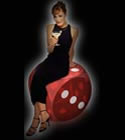Introduction
A great deal of material has been covered in this book. However, for many people, reading hands and learning can be two different things.
Consequently, to help you retain some of the significant more specific ideas, I have reiterated them in a question-and-answer format.
I suggest that after you have read and studied this text, you try to answer the following questions.
You probably will want to go over them many times. In addition, I recommend that you cover the answer that immediately follows each question.
Only look at the solution after you have answered the question to the best of your ability.
Since many of the questions are in nature general strategy, this will make you think back on what you should have learned.
Also, I want to point out that what follows is not a substitute for the text. In fact, many of the ideas in the book are not contained here.
But enough material is included so that after you have thoroughly digested the text, the questions should help keep your Omaha eight-or-better game sharp.
Finally, the questions and answers are organized by topics covered in the text, so you can easily return to the appropriate section for a fuller explanation.
Note: The questions in this section and the next section refer to the low-limit games, where the poker strategy concept is fairly straightforward.
Introduction / General Concepts / More Specific Ideas / General Concepts / Position / Low Hands / High Hands / Your Starting Hand / Starting With Big Pairs / When You Are First In / How To Play Your Hand / Play on the Flop / When You Have the Best Hand / High Versus Low in Three-Handed Pots / Loose Games / Multiway Versus Short-handed Play / Scare Cards / Getting Counterfeited / Getting Quartered / Playing Against Steamers / Playing Against Tight, Solid Players / Your Playing Style / Reading Hands / Psychology / Afterthought


